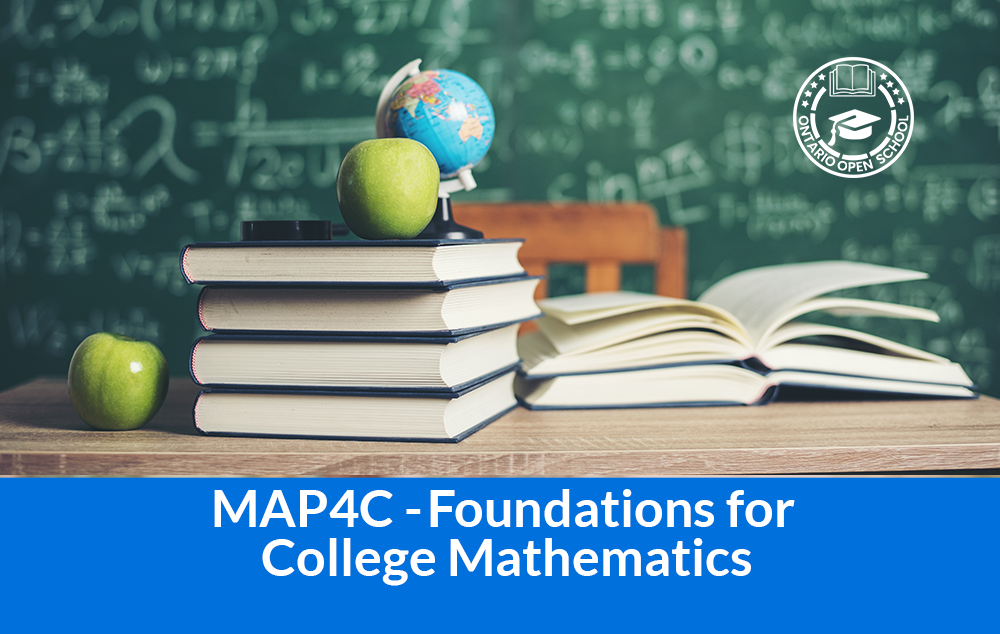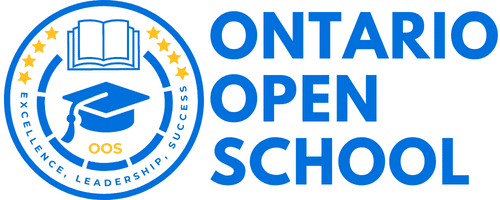- info@ontarioopenschool.com
- 647-494-4499
-
Unit 100 - 29 Gervais Drive, North York, ON.
M3C 1Y9
Copyright 2024 Ontario Open School Inc. All Rights Reserved.
This course enables students to broaden their understanding of real-world applications of mathematics. Students will analyse data using statistical methods; solve problems involving applications of geometry and trigonometry; solve financial problems connected with annuities, budgets, and renting or owning accommodation; simplify expressions; and solve equations. Students will reason mathematically and communicate their thinking as they solve multi-step problems. This course prepares students for college programs in areas such as business, health sciences, and human services, and for certain skilled trades
Unit Order | Unit Name | Suggested Time |
|---|---|---|
| Unit 1 | Data Management Working with Data In this unit, students will learn how to:
-Analyze the use and misuse of data in the media | 12 hours |
| Unit 2 | Data Management -Two-variable data analysis In this unit, students will learn how to:
-Analyze the use and misuse of data in the media | 15 Hours |
| Unit 3 | Exponentials
| 23 hours |
| Unit 4 | Personal Finance
| 24 hours |
| Unit 5 | Geometry
Explore optimization of two-dimensional and three-dimensional figures | 13 hours |
| Unit 6 | Trigonometry
Solve problems using the sine or cosine laws for oblique triangles (non-ambiguous cases only) | 14 hours |
| Final Evaluation 30% | Final Culminating Project: Prepare a presentation to showcase an occupation that makes use of the material in this course, to describe the education and training needed for the occupation, and to highlight a particulate use of mathematics in this course in the occupation. Final Exam | 7 hours 2 hours |
| Total | 110 hours |
A wide variety of instructional strategies are used to provide learning opportunities to accommodate a variety of learning styles, interests and ability levels. These strategies include, but are not limited to:
| · Oral Presentation | · Independent Study |
| · Activity Learning Centers | · Note Making |
| · Discussion | · Inquiry Process |
| · Think Pair Share | · Research Process |
| · Lecture | · Scientific Method |
| · Socratic Lesson | · Computer Assisted Instruction |
| · Visual Stimuli | · Media Presentation |
| · Worksheet | · Brainstorming |
Purpose
The primary purpose of assessment is to improve student learning. Assessment relates directly to the expectations for the course.
A variety of assessments for and as learning are conducted on a regular basis to allow ample opportunities for students to improve and ultimately demonstrate their full range of learning and for the teacher to gather information to provide feedback. Assessment tasks relate to the success criteria set out in lesson plans. Success criteria allow students to see what quality looks like.
Evaluation is the process of judging the quality of student work in relation to the achievement chart categories and criteria and assigning a percentage grade to represent that quality. Evaluation is based on gathering evidence of student achievement through:
Assessment for Learning – we provide feedback and coaching. Assessment FOR Learning is the process of seeking and interpreting evidence for the use of learners and their teachers to decide where the learners are in their learning, where they need to go, and how best to go there.
Assessment as Learning – we help students monitor progress, set goals, reflect on their learning
Assessment AS Learning is the process of the explicit fostering of students’ capacity over time to be their own best assessors, but teachers need to start by presenting and modeling external, structured opportunities for students to assess themselves.
Assessment of Learning – we use assessments to provide evaluative statements about student achievement. Assessment OF Learning is the assessment that becomes public and results in statements of symbols
(marks/grades/levels of achievement) about how well students are learning. It often contributes to pivotal decisions that will affect students’ future.
ASSESSMENT TOOLS
| Units | Duration | Overall Expectations | AFL | AAL | AOL | K
25% |
I
25% |
C
20% |
A 30% |
||
| A | 25 hours | A1-A3 | Student-Teacher Conferencing
Homework
|
Peer Assessment | Presentation | √ | √ | √ | √ | ||
|
70% |
B | 25 hours | B1-B3 | Worksheet
Class Discussion Homework
|
KWL Chart | Unit Test
Class Discussion |
√ | √ | √ | √ | |
| C | 30 hours | C1-C3 | Worksheet
Pair Discussion Homework
|
Learning Log |
Unit Test Written Assignment |
√ | √ | √ | √ | ||
| D | 30 hours | D1-D2 | Homework
Student – Teacher Conferencing |
Reflective Discussion | Unit Test
Portfolio Assignment |
√ | √ | √ | √ | ||
| 30% | A1-D2 |
and Final Exam 30% (Written Component) |
√ |
√ |
√ |
√
|
|||||
Resources
Grading
Weighting of categories
| Knowledge/Understanding | Thinking/Inquiry | Communication | Application |
| 25% | 25% | 25% | 25% |

Course Grade | Grade 12 |
|---|---|
Course Code | MAP4C |
Course Category | Mathematics |
Course Type | College Preparation |
Course Delivery | Online |
Course Duration | 110h |
Course Credit | 1.00 |
Copyright 2024 Ontario Open School Inc. All Rights Reserved.
